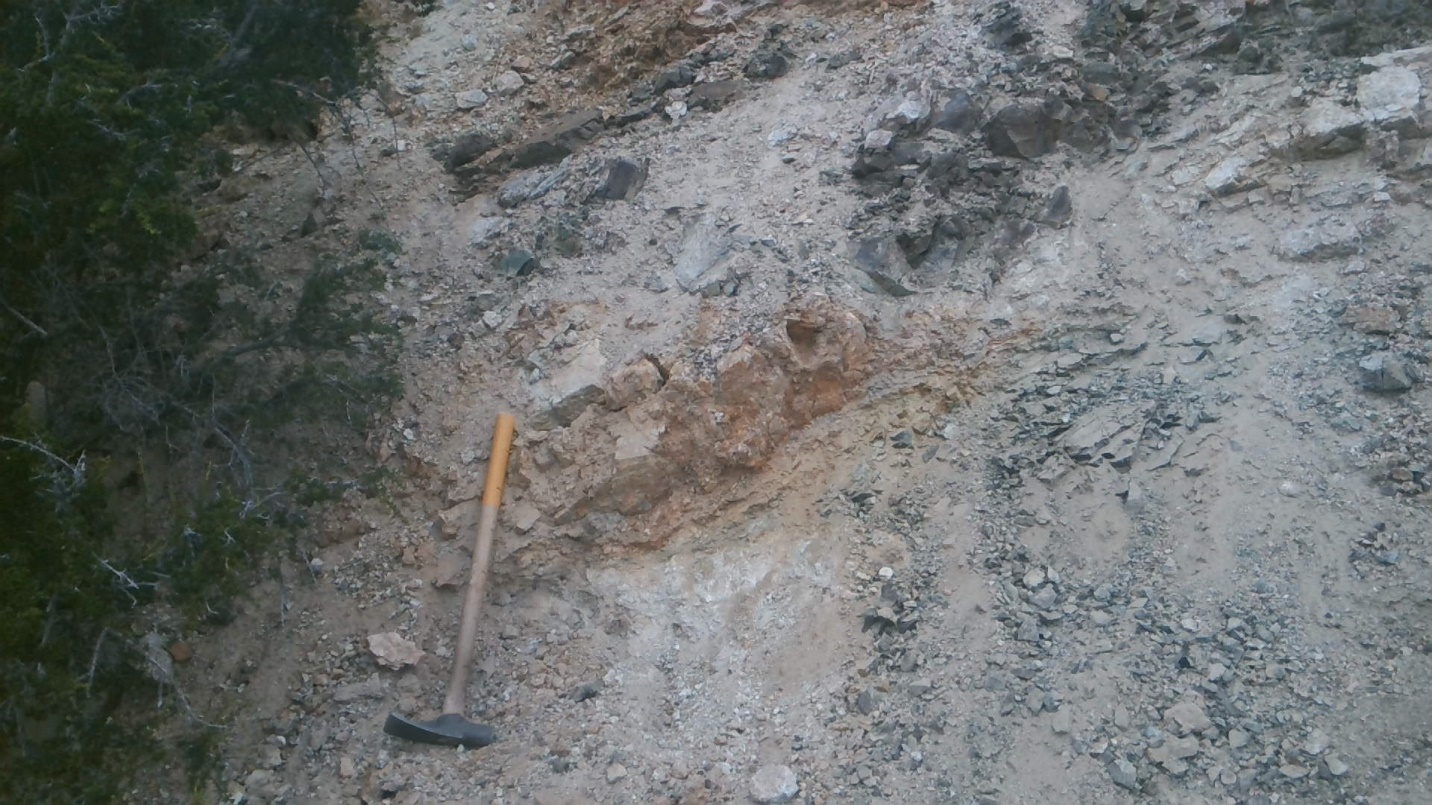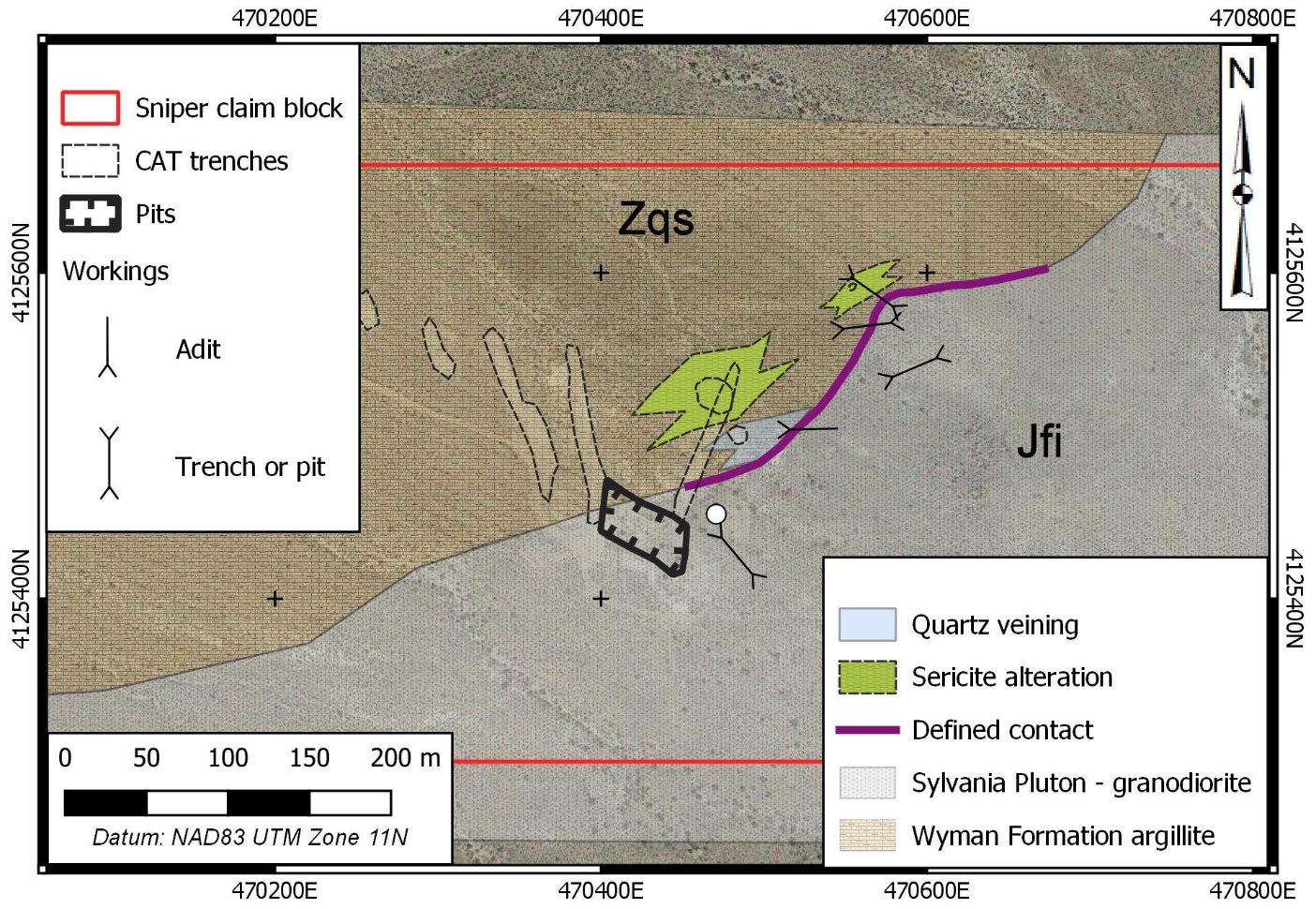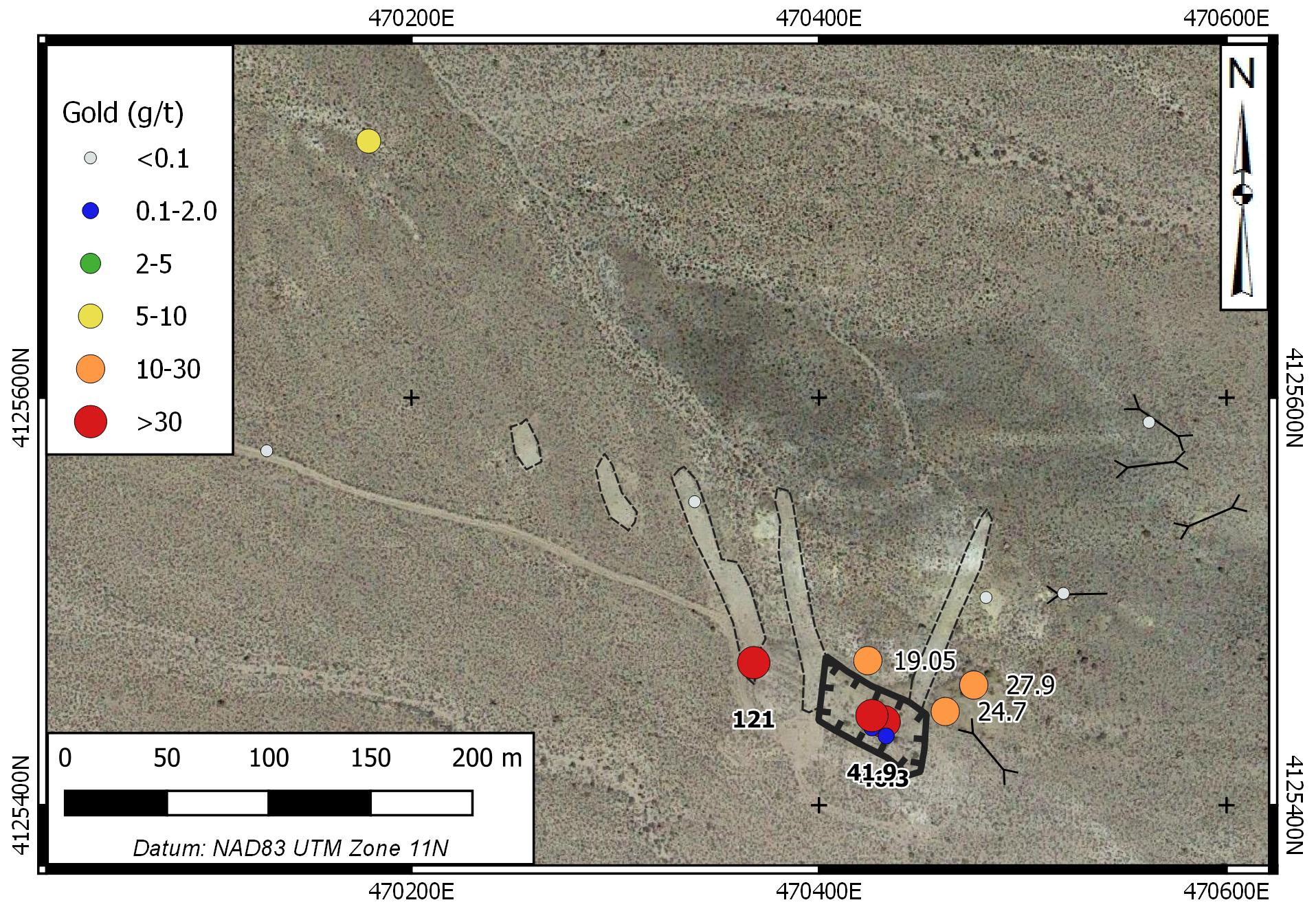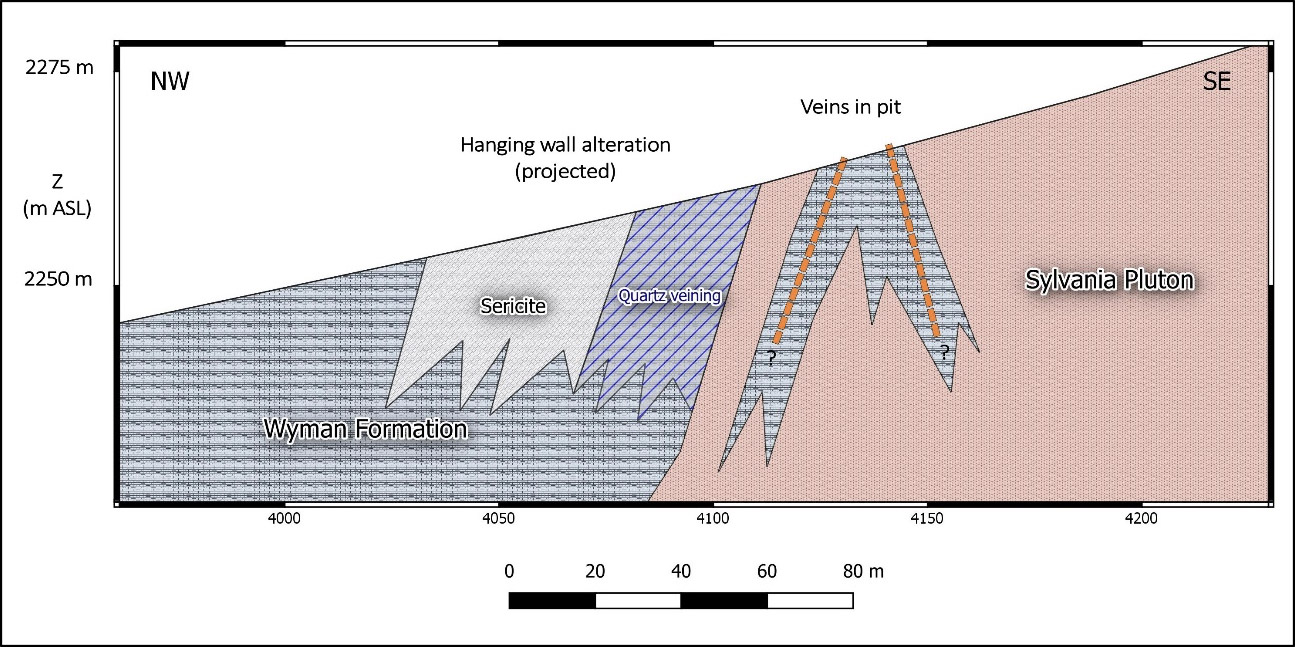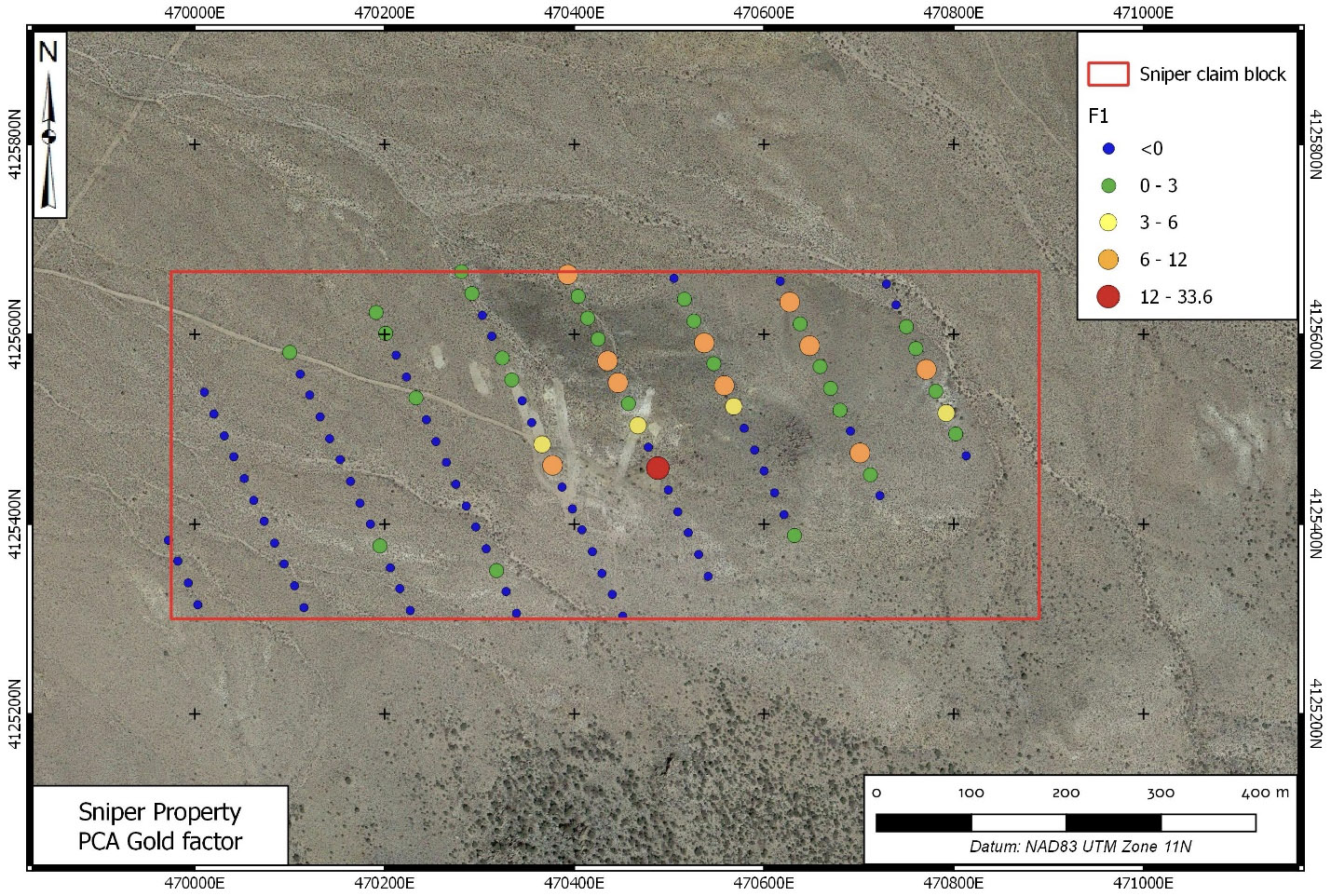The Sniper Property is a high-grade gold & silver prospect south of Gold Point on the northwest flank of Gold Mountain in Esmeralda County, Nevada. It lies in the Tokop Mining District. The property covers historic adits now obliterated by bulldozer excavation, including a small open pit. The property was last worked during the 1980’s.
Mineralization exposed in a small pit and traceable for about 25 m. A 40 cm chip sample across the lower vein returned 46.3 g/t Au.
The Sniper Property covers intrusive-related mesothermal quartz vein mineralization along the contact between Precambrian Wyman Formation metamorphosed sedimentary rocks and the Jurassic Sylvania Pluton. The Wyman Formation rocks consist of laminated to thin-bedded meta-siltstone and argillite with thin interbedded carbonates, locally metamorphosed to hornfels or tactite along the contact with the intrusive rocks. Mineralization consists of sulphide-bearing quartz veins associated with andesite dykes in the underlying Sylvania Pluton granodiorite. In limited exposure the veins are up to 40 cm thick with float to 1 m elsewhere. They consist of ribbon-banded quartz and limonite with pyrite, galena, tetrahedrite and chalcopyrite. Secondary minerals included chrysocolla and pronounced wulfenite.
Property scale geology focused on the area of historic workings. Altered Wyman Formation rocks overlie granodiorite; known mineralization is confined to the roof of the intrusion below the contact.
Gold and silver grades are quite high; in initial sampling, 7 of 14 samples returned assays greater than 5 g/t Au and 5 of 14 samples returned assays greater than 20 g/t Au. A grab sample from a waste pile returned 121 g/t Au. A 40 cm chip sample across mineralization in place returned 46.3 g/t Au. Silver assays ranged from 0.2 to 1,375 g/t Ag with 3 of 14 samples assaying greater than 100 g/t Ag. There is limited correlation between gold and silver in the results.
Gold in rock samples from initial sampling in 2019.
The exposed mineralization suggests that there may be a zone of gold and silver mineralization in the granodiorite immediately below the intrusive contact, localized along a fracture zone. While the two veins exposed in the pit strike E-W to SE-NW, their strike may not reflect the overall strike of the controlling fracture system which may be dilational given the presence of dykes. The overall system may strike at a high angle to the veins, dipping to the NW beneath cover.
Silver Range conducted soil geochemical surveys on the Sniper Property and surrounding area in 2020. Strong responses for gold, silver and arsenic were recorded. Principal component analysis of the factor most dominated by gold (PCA Factor 1) are shown below:
Silver Range intends to conduct geophysical and additional geochemical surveys to trace out the intrusive contact and define the extent of mineralization along strike and down-dip from the known showings. There is a strong lead-copper response associated with the gold and silver mineralization and the pyrite-galena-tetrahedrite-chalcopyrite assemblage is likely quite chargeable, suggesting IP surveys may be a useful tool in delineating economic mineralization on the property.

